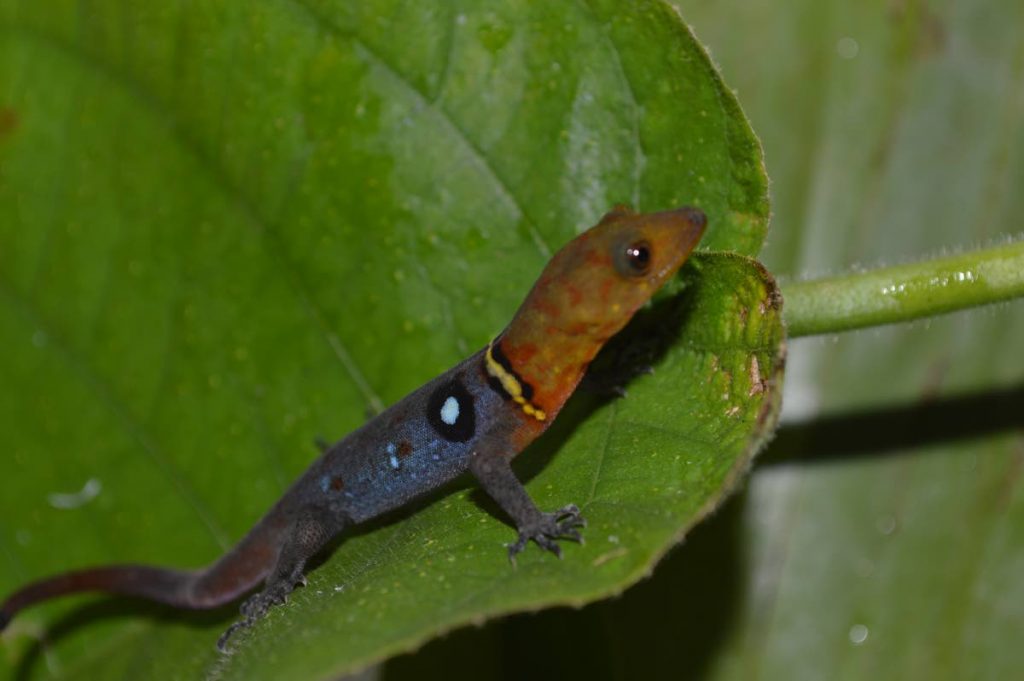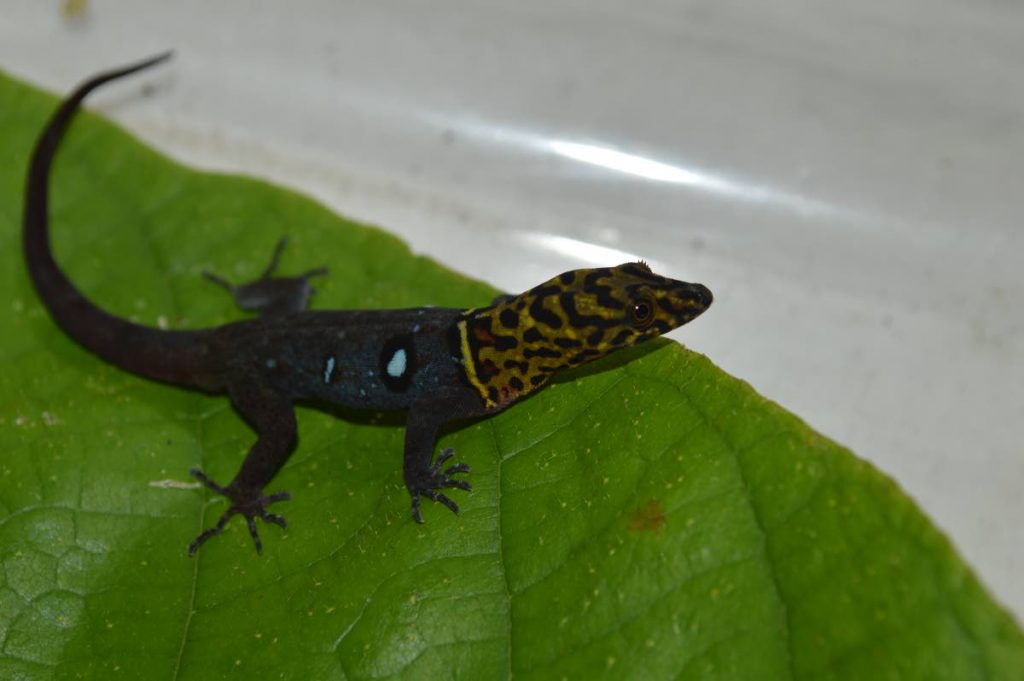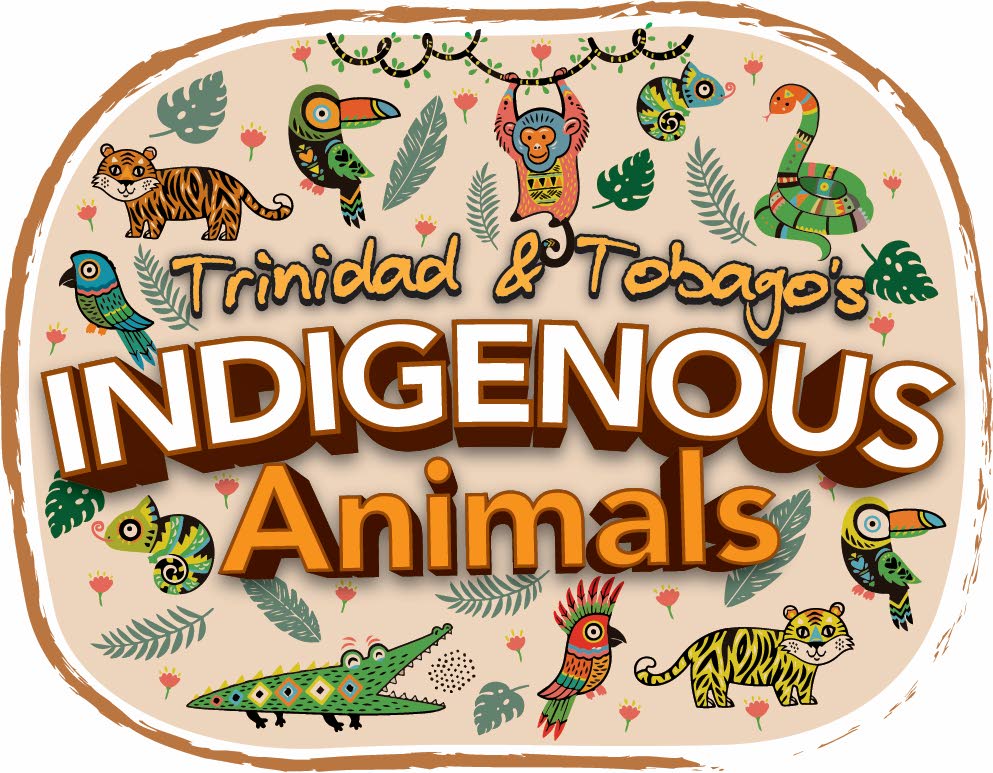Keeping an eye on Tobago's ocellated gecko

If you are ever hiking in Tobago’s rainforests and come across a lizard with an “eye” on its body, you’re not hallucinating.
What you’ve actually stumbled upon is Tobago’s endemic ocellated gecko (Gonatodes ocellatus).
Documented on the island since the early 1800s, these geckoes are one-of-a-kind because they are only found in Tobago – and on the island of Little Tobago – and nowhere else in the world. The have been documented on the island since the early 1800s.

Herpetologist Renoir Auguste told Newsday Kids that this gecko got its name because of its appearance.
He explained, “The ocellated gecko gets its name from the fact that it has these kinds of spots that look like eyes on their shoulders which gives it an ocellated feature.
“They are found mostly across northeast Tobago including the Tobago Main Ridge and Little Tobago. But they tend to occupy mostly forested areas.”
Though male and female geckoes have the species’ iconic ocellated feature, there is still a difference between the two.
Auguste said male ocellated geckos are more colourful given their heads can either be bright orange or have a leopard-like pattern.
On the other hand, female geckoes are uniformly coloured in a dull brown hue.
But researchers are still learning more about these colour variations.
Auguste explained, “We are not sure what are the evolutionary benefits of the different colour morphs (in males) and which one is more dominant than the other.

“But I think that’s something that can be an interesting study in the future.”
Like other lizards, geckoes serve the main ecological importance of balancing the population of some insects like worms and beetles.
“They feed on insects and invertebrates, so they are important animals in the middle component of food chains in that they keep the population of smaller organisms in check.”
While some geckoes are known to have impressive camouflage skills, this isn’t true for the ocellated gecko as Auguste said they can be easily seen even though they grow no more than six centimetres in length.
So what gives these geckoes away?
“You would see them if you go looking for them because they tend to stick out especially the males.
“They tend to like to hide near the base of a tree so if a predator comes near them, they would then dart into the crevices of the tree’s root system.”
For now, the main threat facing the geckoes is climate change especially its effects on localised weather patterns and temperature.
Classified as reptiles like turtles and snakes, the ocellated gecko buries its eggs in the soil like these animals.
As such, the temperature and moisture of the soil they bury the eggs in is important.
As climate change continues to affect Tobago’s weather, like other small island developing states, the ocellated geckoes are vulnerable and must be protected.


Comments
"Keeping an eye on Tobago’s ocellated gecko"